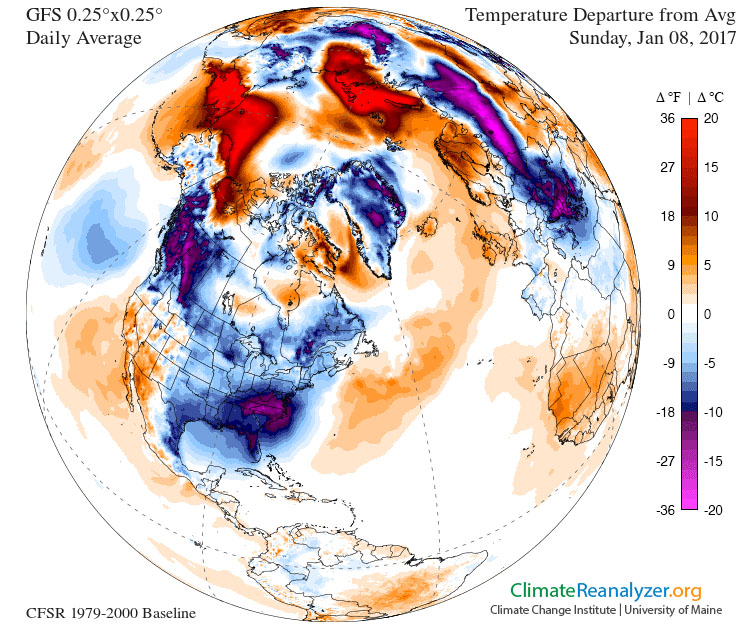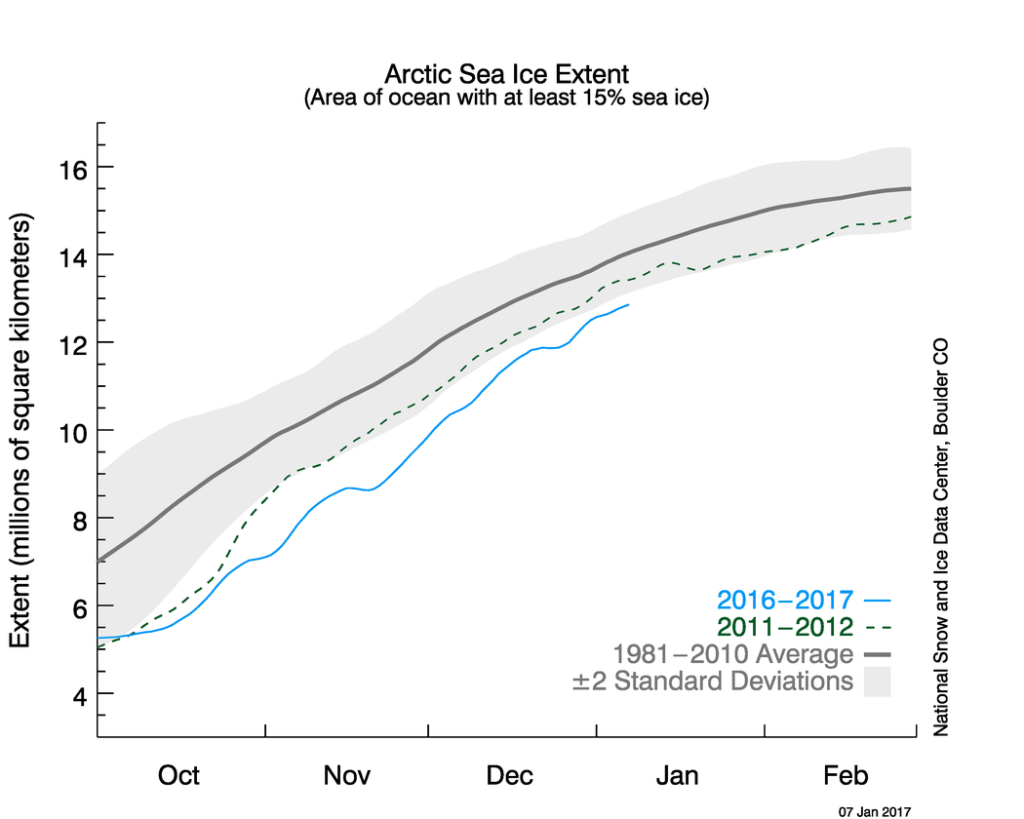Extreme Cold Due to Warm Arctic
 The current extreme cold temperatures across most of North America and Europe can be traced directly to the extreme warmth in the Arctic just as climate models predict. Note the red and orange areas of above normal temperature on this global graphic for today.
The current extreme cold temperatures across most of North America and Europe can be traced directly to the extreme warmth in the Arctic just as climate models predict. Note the red and orange areas of above normal temperature on this global graphic for today.
Though paradoxical, at its simplest level it’s rather easy to grasp. Usually the Arctic Ocean is frozen this time of year. While there is still ice across much of the Arctic, the area or extent for this time of year is at a record low. The graph below shows the amount of sea ice compared to prior years. Also, much of the ice that does exist is thinner than usual. Less ice area and thinner ice mean that the air temperatures are much warmer than usual.
The normal solid thick ice barrier surrounding the north pole creates a huge area that by definition has to be below freezing temperature. Even though we would find it extremely cold, the relatively warmer Arctic Ocean contains tremendous heat energy affecting the atmosphere. Changes in temperature patterns cause changes to air currents, such as the “jet stream” — the semicircular pattern of air that has a seasonal pattern sweeping from west to east in the high northern latitudes.

Disruption of those normal air masses allows the gigantic mass of cold Arctic air to move south as depicted by the blue and purple areas on the map at the top. Sometimes referred to as the “polar vortex” this has been happening more frequently. As the planet continues to warm above the normal range for the last few millennia, we can expect to see more changes in “normal weather.” Looking back on my blog posts from a few years ago, I wrote about something similar Why South Dakota Blizzard Fits With Global Warming and Tornadoes and the New Abnormal Weather Pattern.
Usually I focus on the melting glaciers and ice sheets causing the unstoppable rise in sea level as the greatest impact and disruption for the world. Yet an equal case can be made that “weird weather” will be a huge challenge to human civilization. Just as one example, agriculture is fundamentally dependent on predictable weather patterns. As temperatures and precipitation depart from the normal patterns, it will likely pose tremendous challenges for global food production.
All of this should add to the urgency to reduce the warming ASAP. The way to do that is to reduce greenhouse gases such as carbon dioxide that are trapping extraordinary heat in the atmosphere and oceans. That is the focus of organizations like Citizens Climate Lobby and 350.org. Now that we have passed the tipping point however, we must work to adapt to the new normal, at the same time that we work to slow the warming.
